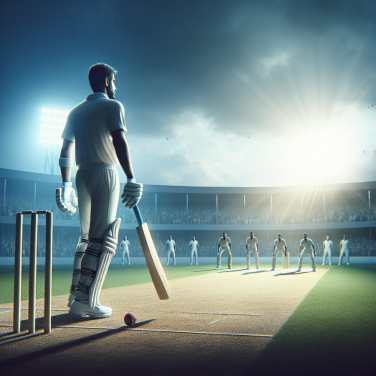Understanding Your Skillset: Identifying Your Strengths and Weaknesses
In order to determine what soccer position you should play, it is crucial that you first understand your skillset. This entails reflecting on your strengths and weaknesses in the game and how these aspects can influence your overall performance.
If you have a strong physical presence and a knack for accurately intercepting the ball, your strengths align with that of a defender's. Defenders must hold their ground against the opposing team's forwards and stop them from scoring by blocking shots and making successful tackles. It is a perfect position for individuals who have a strong awareness of space, can read the game well and are excellent at making calculated decisions under pressure.
However, not all positions solely rely on physical skills. Some positions require quick thinking and problem-solving abilities. Midfielders, for instance, must be adept at controlling the game and creating scoring opportunities. This role requires great vision, precision and an ability to make split-second decisions.
If you possess exceptional technical skills, consider the forward or striker position. Strikers need to be swift, have excellent dribbling skills and a knack for finishing. A striker's main responsibility is to score goals, hence being precise and having an eye for the goal are paramount. However, a major weakness for players in this role can include lack of defensive skills or physical toughness, especially when compared to positions like defenders.
On the other hand, if you're more of a team player and possess good communication skills, you may be best suited for the goalkeeper position. Goalkeepers need to be able to coordinate with the whole team, have excellent reflexes, and handle pressure well. One of the main weaknesses of this position can be a lack of agility or speed and limited involvement in the pitch's offensive plays.
Understanding your skillset does not just involve determining your position of play, but it also helps to devise a plan on how to improve. Once you have determined your strengths, it is essential to spend time maintaining these skills. Special training exercises and drills can help enhance your strong areas and make sure they continue to benefit your performance.
Identifying your weaknesses is just as important as understanding your strengths. Recognizing areas where you lack can provide a useful guide on where to direct your focus during training. Keep in mind that it's crucial not to ignore your weaknesses but instead work meticulously to transform them into strengths.
Being objective in self-assessment is a key strategy when identifying strengths and weaknesses.
Read also:
Mastering the Ice: An In-depth Exploration of Hockey's History and Evolution
Matching Your Ability to the Field: Spotting the Perfect Position for You in Soccer
Understanding your personal soccer ability and how it aligns with a particular position on the field is crucial in optimizing your performance. All positions have unique requirements that suit different types of players. Analyzing your strengths, weaknesses, and preferred style of play can help you spot the perfect position that will allow you to shine on the soccer field.
To begin the process, it's critical to self-evaluate and identify your physical attributes. Consider your speed, endurance, agility, and strength. For instance, if you're fast and have good endurance, a role in the midfield might suit you since it requires a lot of running. Moreover, if you're strong and tall, you might do well as a defender, using your physical prowess to fend off attacks. Conversely, those with agility might be more naturally suited towards an attacking role.
Additionally, technical skills are a must for all positions but certain skills are more fundamental to some than others. For example, a good shooting technique is essential for strikers, while solid passing is critical for midfielders. If you possess exceptional ball control and dribbling, you might find yourself best positioned as a winger or attacking midfielder. On the other hand, if you're strong in tackles and possess good heading skills, a defensive position may be the perfect match for you.
Tactical awareness is another key consideration when spotting the perfect position. This refers to your understanding of the game strategy, position, and the ability to predict the flow of the game. Central positions such as centre-back and centre-forward usually require players to have a strong understanding of the game and excellent decision-making abilities. If you have a sharp sense of strategies and can quickly make sound decisions, these positions might be suitable for you.
Your temperament and mentality also play a vital role in your suitable position. If you're an aggressive and brave player, a defensive role might fit you. However, if you're calm and composed, you might excellently function in midfield where it is essential to retain possession under pressure. For those who are confident and thrive under pressure, consider a striker position as it often depends on taking critical chances.
Lastly, your preferred style of play should be factored in. If you enjoy being part of the action constantly and like to dictate the flow of the game, then a midfield role might be your best fit. If you prefer waiting for the right moment to make a crucial intervention, perhaps as a goal scorer or shot stopper, then a forward or goalkeeper role might be more fitting.




